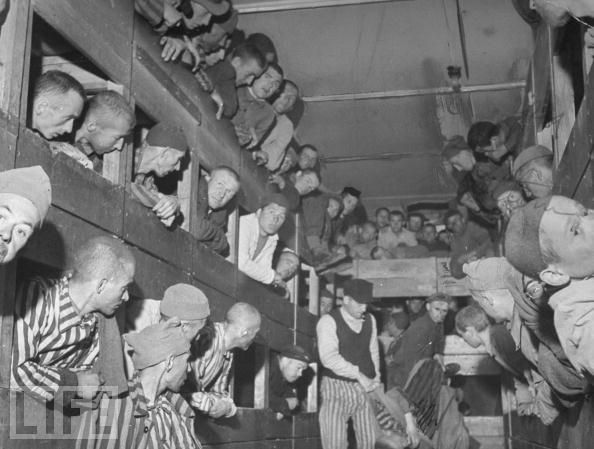
His Blood On Us
After World War II,
immigration to the territories that
would become Israel, A Jewish State (1948)
increased and the British authorities decided to stop it by
sending the ships back to the ports of embarkation in Europe. The
first ship to which this policy was applied was the Exodus 1947.
The ship sailed from the port of Site, near Marseilles, on July 11, 1947, with
4,515 immigrants, including 655 children, on board. As soon as it left the
territorial waters of France, British destroyers accompanied it.
On July 18, 1947 near the coast
of what is now Israel, just outside territorial waters, the
British rammed the ship The Exodux and boarded it, while the
immigrants put up a desperate defense.
Two immigrants and a crewman were killed in the battle, and 30 were wounded.
The ship was towed to Haifa, where the immigrants were forced onto deportation
ships bound for France. At Port-de-Bouc, in southern France, the would-be
immigrants remained in the ships' holds for 24 days during a heat wave,
refusing to disembark despite the shortage of food, the crowding and the
abominable sanitary conditions. The French government refused to force them off
the boat. Eventually, the British decided to return the would-be immigrants to
Germany, and on August 22 the ship left for the port of Hamburg, then in the
British occupation zone. The immigrants were forcibly taken off and transported
to two camps near Lubeck.
The majority of the passengers on the Exodus 1947 settled in Israel, though
some had to wait until after the establishment of the State of Israel.
Source: Israeli Foreign Ministry.
Subject: Today in History 8 Av
Elite Veteran
1942, the Nazis ordered the deportation of all Jews from the Warsaw Ghetto. The Warsaw Ghetto held 400,000 people (30% of the entire population of Warsaw), crammed into a tiny area. In its three years of existence, thousands of Jews died of disease and starvation. Yet despite all, the Jews managed to continue religious and cultural activities in the ghetto. Then on the eve of Tisha 8'Av, the saddest day of the Jewish year, the Nazis began the deportation of 265,000 Jews, lasting for a period of two months, to the Treblinka death camp. When the Nazis sought to liquidate the ghetto, Jewish resistance fighters took action, digging hundreds of bunkers under the houses, connected through the sewage system. In the spring of 1943, some 750 Jewish partisans began the Warsaw Ghetto Uprising, killing approximately 300 Germans in one month of fighting.
Today in History
